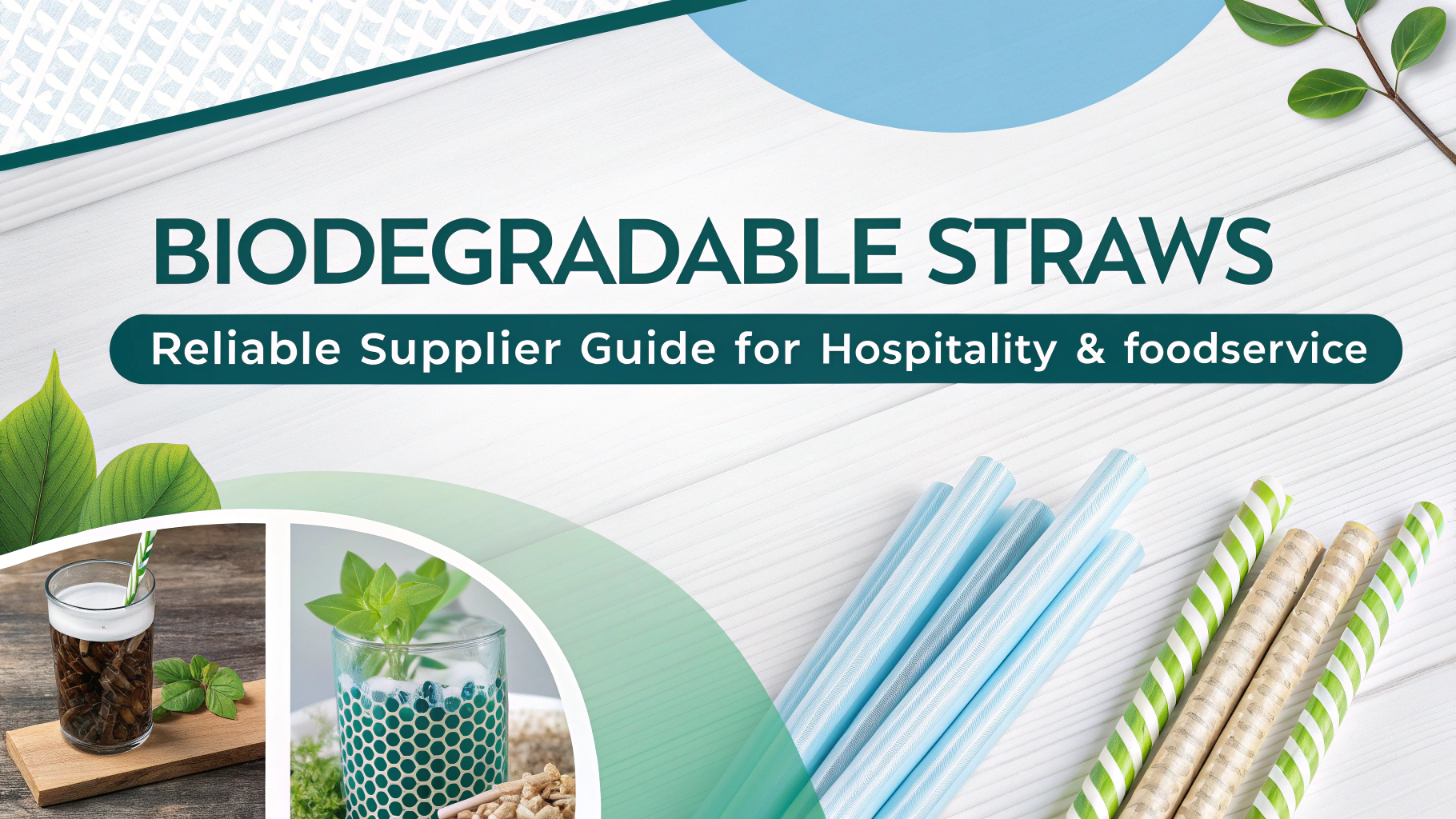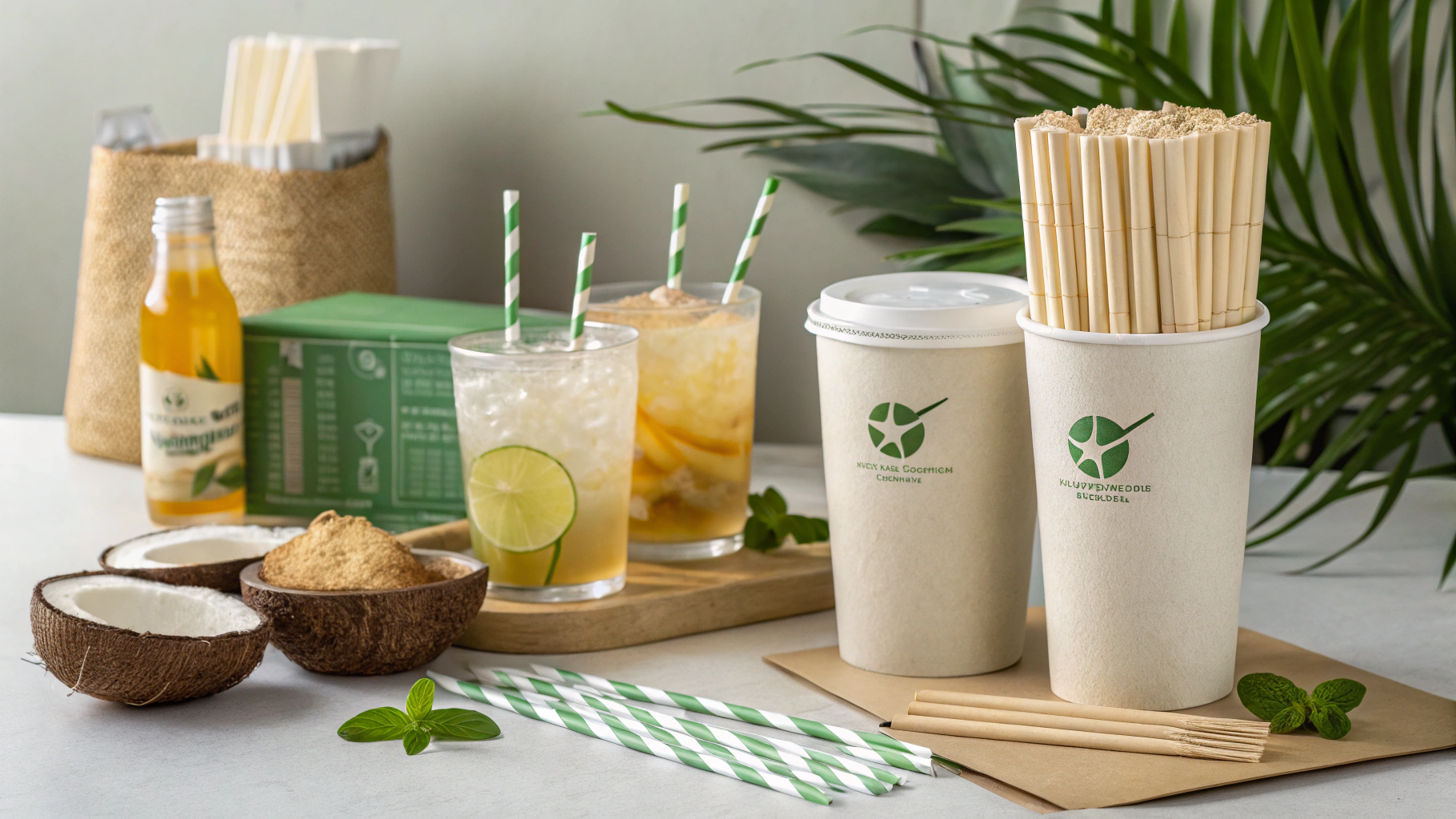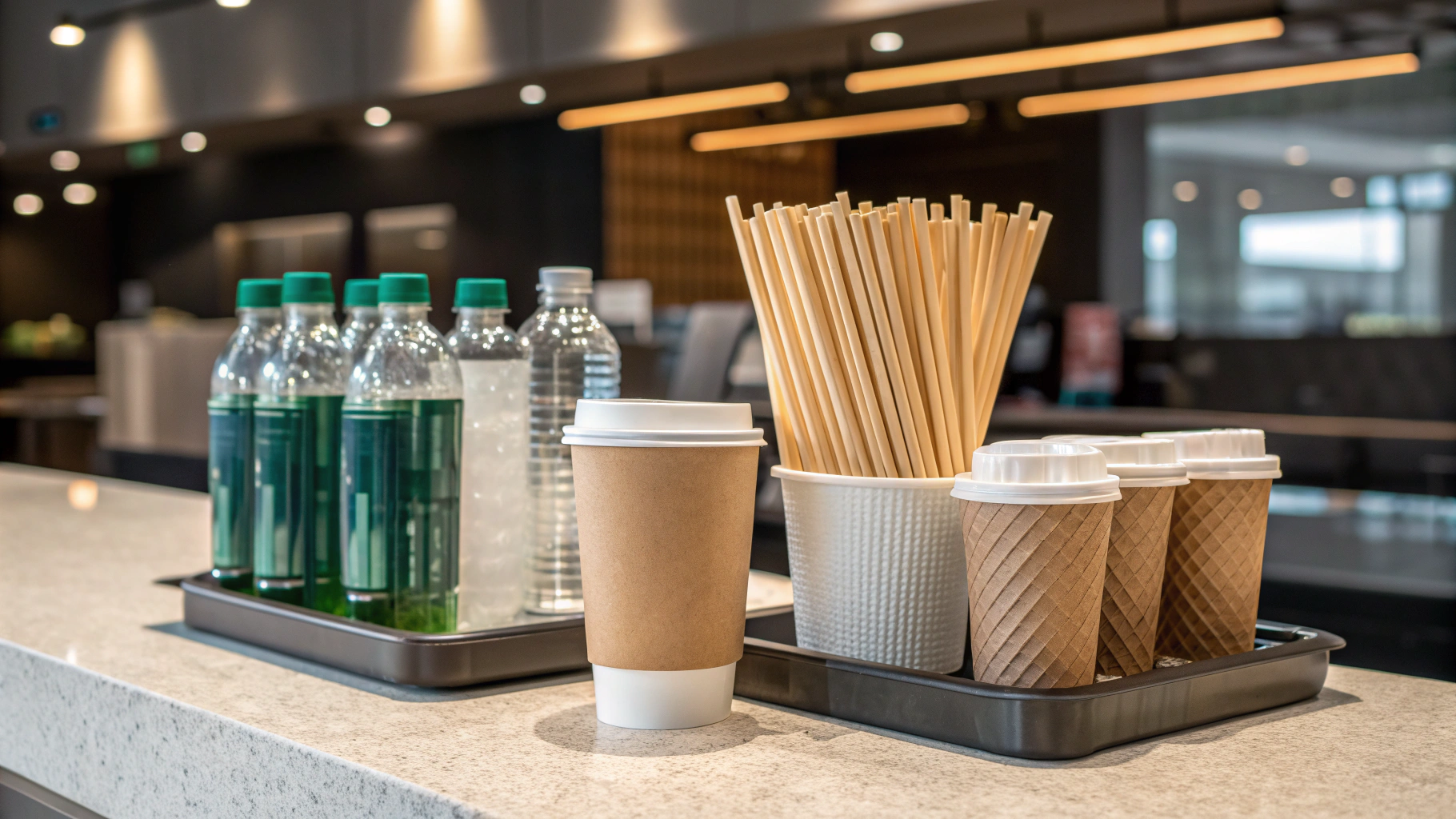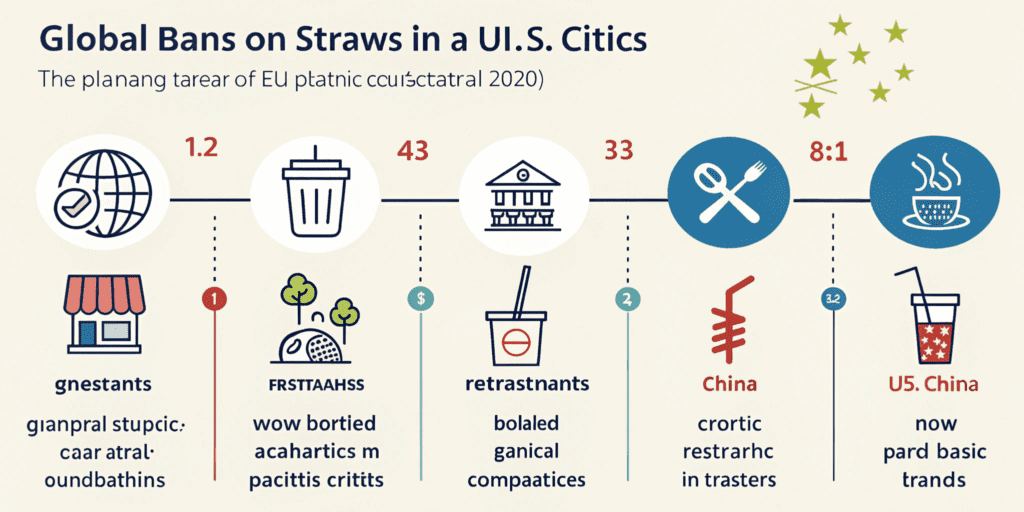
As procurement managers, operations directors, and sustainability officers navigate the complex landscape of corporate responsibility, the shift from plastic to paper straws has become a visible symbol of environmental commitment. However, beneath the surface of public perception lies a nuanced reality that challenges the widely held belief in paper straws’ inherent sustainability. This article dissects the true environmental footprint of paper straws, exposing potential “greenwashing” and guiding B2B decision-makers toward genuinely sustainable solutions. Ignoring these insights risks not only operational inefficiencies and escalated costs but also significant reputational damage and potential regulatory penalties in an increasingly scrutinized market.
The Global Push for Sustainable Solutions and Plastic Bans
The widespread adoption of paper straws was largely a response to escalating public and regulatory pressure fueled by concerns over marine plastic pollution. Vivid images, such as a sea turtle entangled with a plastic straw, galvanized global action, making plastic straws a tangible symbol of environmental harm. This public outcry swiftly translated into widespread legislative action. The United Kingdom banned single-use plastic straws in 2020, followed by 27 European Union countries by June 2021, and similar measures enacted across various U.S. cities and states.
Beyond government mandates, major corporations, including airlines, hotels, and theme parks, proactively signaled their commitment by replacing plastic straws, creating a significant market shift. This collective movement aimed to reduce plastic waste, improve environmental credentials, and meet evolving consumer expectations for eco-conscious brands. However, the rapid pivot to paper straws, while well-intentioned, has unveiled a complex array of hidden costs and unintended consequences that demand rigorous scrutiny from B2B decision-makers.
The global shift to paper straws, driven by public and regulatory pressure, reveals hidden costs and unintended consequences for B2B decision-makers.
Deconstructing “Sustainability”: Beyond Initial Perceptions of Paper Straws
The journey from plastic to paper straws was championed as a straightforward environmental win. Yet, a deeper dive into the life cycle of paper straws reveals a more intricate and often problematic reality, challenging their perceived eco-friendliness.
Beyond Biodegradability: The Hidden Environmental Costs of Paper Straws
While paper straws are often lauded for their biodegradability, their production process tells a different story. The pulp and paper industry, which supplies the raw materials for these straws, is an energy-intensive sector, accounting for approximately 6% of global industrial energy use and 2% of direct industrial CO2 emissions. This substantial energy demand often relies on fossil fuels, contributing significantly to greenhouse gas emissions.
Life Cycle Assessment (LCA) insights further underscore these concerns. A 2022 study published inScience of the Total Environmentcompared the environmental impact of various straw materials and indicated that paper straws (PA) had a Global Warming Potential (GWP) of 2.58E+06 kg CO2 eq. This figure is significantly higher than that of polypropylene (PP) plastic straws, which measured 5.66E+05 kg CO2 eq in the same study. The research highlighted that replacing PP straws with paper alternatives to curb marine plastic pollution could incur environmental costs in other categories, such as climate change impact.
Moreover, paper production is notoriously water-intensive, consuming vast quantities of fresh water. If not sourced from responsibly managed forests certified by bodies like the Forest Stewardship Council (FSC), the demand for paper can also contribute to deforestation, leading to habitat loss and reduced carbon sequestration capacity. These factors demonstrate that the environmental footprint of paper straws extends far beyond their end-of-life decomposition.
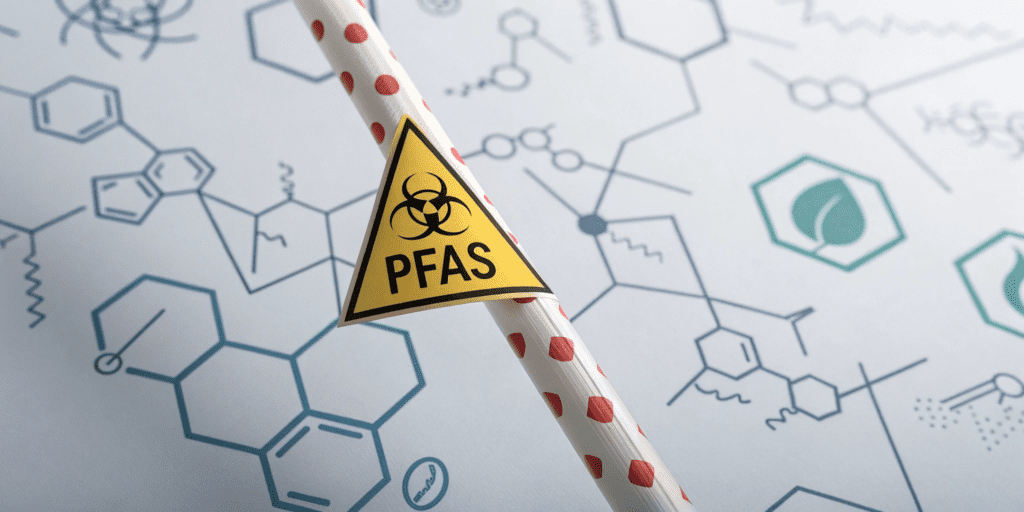
The Troubling Reality of PFAS Chemicals in Paper Straws
Perhaps one of the most alarming revelations regarding paper straws is the widespread presence of per- and polyfluoroalkyl substances (PFAS). These “forever chemicals” are often used as water-repellent coatings to improve the durability of paper straws, a critical design flaw in their inherent material. An August 2023 study published inFood Additives and Contaminantsconducted by Belgian researchers found PFAS in 90% of tested paper straw brands in Europe, making them the most likely material to contain these problematic substances across all straw types examined.
The implications of PFAS are profound. These chemicals are highly persistent, breaking down incredibly slowly over thousands of years and accumulating in the environment and biological systems. They have been linked to a range of serious health issues, including thyroid disease, liver damage, kidney cancer, testicular cancer, increased cholesterol, and even lower vaccine response. The presence of PFAS directly contradicts the “eco-friendly” and “biodegradable” marketing claims of many paper straws, exposing companies to significant compliance risks, particularly with emerging regulations targeting these hazardous compounds.
Durability, Functionality, and Consumer Dissatisfaction
Beyond their hidden environmental costs, paper straws also present substantial operational and customer experience challenges. Their inherent material properties mean they struggle with durability, especially when exposed to liquids for extended periods. Research published inBioResourcesin 2019 demonstrated that paper straws can lose over 75% of their firmness and 70-90% of their compressive strength after only 20-30 minutes in liquids. This rapid degradation frequently leads to frustration among consumers as straws become soggy, collapse, or dissolve before a drink is finished.
This poor functionality has practical consequences for businesses. Customers may resort to using multiple straws per drink, inadvertently negating some of the intended environmental benefits and increasing waste volume. This can also lead to negative brand perception, with consumers associating the poor performance of the straw with the overall quality of the establishment’s offerings, thereby impacting brand loyalty and perceived value.
Paper straws’ production, PFAS content, and poor durability challenge their perceived eco-friendliness and impact customer satisfaction.
The “Greenwashing” Dilemma: Unpacking Misleading Claims
The rapid adoption of paper straws has inadvertently created fertile ground for “greenwashing,” where companies make unsubstantiated or misleading claims about their environmental practices or products.
Unmasking Greenwashing Concerns in the Paper Straw Market
A glaring example of greenwashing occurred when McDonald’s UK introduced “100% recyclable” paper straws in 2018 to replace plastic ones. Despite the environmental claim, these paper straws ultimately could not be recycled due to a lack of appropriate infrastructure to process their thickness and coatings, leading them to end up in landfills or incineration, or even oceans. This highlights a critical disconnect between marketing claims and actual end-of-life realities. The EU’s Environmental Claims Guidance explicitly discourages vague general claims like “environmentally friendly” precisely because they can mislead consumers and facilitate greenwashing.
Many recycling facilities are not equipped to process food-contaminated paper products or paper straws with certain coatings, even if the base material is paper. This infrastructure gap significantly hinders the circularity of paper straws, pushing them into waste streams despite being labeled as recyclable or compostable. This challenge underscores the need for businesses to look beyond superficial claims and scrutinize the entire supply chain and disposal infrastructure.
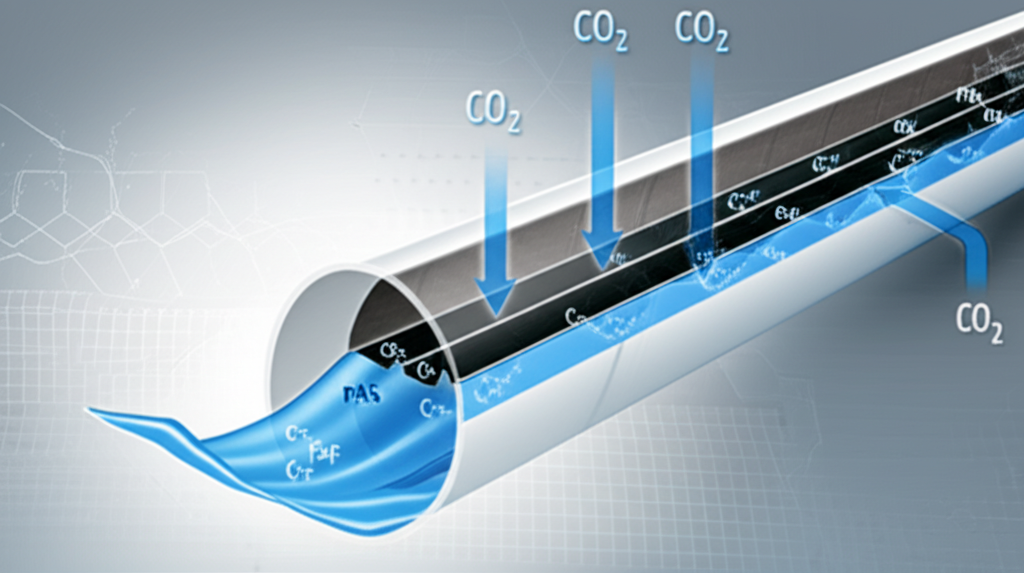
Superficial Solutions vs. Systemic Impact
The focus on banning plastic straws, while symbolic, addresses a relatively minor environmental issue when viewed in a broader context. Plastic straws constitute a minuscule 0.025% of the vast amount of plastic entering the ocean annually. This disproportionate focus can divert attention and resources from much larger sources of plastic pollution, such as abandoned fishing nets or industrial discharge.
Expert criticism, particularly from firms like Boston Consulting Group (BCG), has labeled the focus on paper straws as largely a “red herring.” BCG notes that this shift made very little overall impact on broader plastic waste and biodiversity issues. Worse, by tainting the reputation of genuinely sustainable products due to their poor performance or hidden environmental costs, it inadvertently pushed consumers back towards plastic, eroding trust in eco-friendly alternatives. For businesses, investing heavily in a “solution” that is ultimately superficial or even counterproductive carries significant strategic risk.
Greenwashing in the paper straw market highlights a critical disconnect between marketing claims and actual environmental impact.
Strategic Procurement: Evaluating Sustainability for B2B Operations
For procurement managers, operations directors, and sustainability officers, the nuanced reality of paper straws demands a sophisticated approach to sourcing. Simply switching from plastic to paper based on surface-level assumptions can lead to unforeseen challenges and undermine genuine sustainability goals.
The transition to paper straws, particularly those that are not truly sustainable, has led to escalated procurement costs. Paper straws are typically two to three times more expensive than their plastic counterparts, directly impacting operational budgets and potentially eroding profit margins if not offset by other efficiencies or price adjustments.
Furthermore, sourcing genuinely sustainable paper straws introduces significant supply chain complexity. It requires rigorous vetting for verifiable certifications, such as FSC for responsible forest management and independent third-party certifications (e.g., BPI, DIN CERTCO) for industrial compostability standards like ASTM D6400/D6868 (North America) and EN13432 (Europe). Crucially, businesses must demand PFAS-free assurance to mitigate health, environmental, and compliance risks. This increased due diligence necessitates deeper supplier relationships and robust auditing processes.
Perhaps most critically, companies that make unsubstantiated green claims, whether intentionally or inadvertently, face significant reputational risk. In an era of heightened consumer awareness and regulatory scrutiny, accusations of greenwashing can severely damage brand trust and loyalty, leading to consumer backlash, negative media coverage, and even potential legal penalties. For instance, the Korea Fair Trade Commission has proposed amendments to its “Review Guidelines Regarding Greenwashing” to prevent indiscriminate marketing. Proactive risk mitigation requires transparency and verifiable data.
| Functie | B2B operationele impact | Nalevingsopmerking | ROI-potentieel |
|---|---|---|---|
| Kunststof (PP) | Low upfront cost, high durability, readily available. | Increasingly banned globally (e.g., UK 2020, EU 2021 Single-Use Plastics Directive). | Negative ROI due to potential fines, PR crises, and lost revenue. |
| Paper (Coated/PFAS) | Moderate cost, poor durability, customer complaints. | Risk of non-compliance with emerging PFAS regulations, greenwashing laws (e.g., EU Environmental Claims Guidance). | Low ROI due to increased waste, consumer dissatisfaction, potential fines. |
| Paper (PFAS-Free, Certified Com.) | Higher cost, improved but still limited durability. | Adheres to ASTM D6400/EN13432 for industrial composting; FSC-certified sourcing. | Moderate ROI from positive brand image, but higher operational cost. |
| PLA Bioplastic (Industrial Com.) | Higher cost, better durability than paper, specific disposal needs. | Requires industrial composting facilities (e.g., ASTM D6400 certified). | Moderate ROI if robust industrial composting infrastructure available and aligned with local facilities. |
| Reusable (Stainless Steel/Bamboo) | High upfront investment, requires cleaning/logistics infrastructure. | Promotes circular economy principles, reduces single-use reliance. | High long-term ROI from waste reduction, strong brand loyalty, reduced procurement. |
Strategic procurement demands rigorous vetting of straw alternatives to mitigate costs, compliance risks, and reputational damage.
Innovating for True Sustainability: Next-Gen Solutions
Moving beyond the pitfalls of conventional paper straws requires embracing truly innovative and verifiable sustainable solutions that address both environmental impact and operational performance.
Certified Industrially Compostable Solutions
For businesses committed to single-use options, the focus must shift to materials and products that meet stringent industrial compostability standards. Products certified to standards like ASTM D6400/D6868 (North America) and EN13432 (Europe) ensure that materials break down completely within 180 days in commercial composting facilities, leaving no harmful residues. These certifications provide a verifiable benchmark that goes beyond mere “biodegradable” claims.
Innovative materials such as PHA (polyhydroxyalkanoate) straws represent a promising alternative. PHA is a biopolymer derived from natural sources, like canola oil, offering enhanced durability and a feel similar to traditional plastic, while boasting remarkable biodegradability credentials. For businesses seeking genuine eco-friendly options, exploring thebest biodegradable straws that aren’t paperis a strategic imperative.
Case Study: Phade® Straw Adoption:Phade® straws, made from PHA, exemplify this next generation of sustainable solutions. They have achieved rigorous certifications, including TUV Austria’s ‘OK compost HOME’ and ‘OK biodegradable MARINE’ certifications, signifying their ability to break down in both industrial and home composting environments, as well as marine ecosystems. Leading foodservice distributors have integrated PHA straws into their offerings, recognizing their superior durability and verified end-of-life pathways. This adoption allows companies to avoid the functionality issues and greenwashing accusations associated with earlier paper straw iterations, demonstrating a genuine commitment to environmental stewardship without compromising customer experience. Delve deeper into the environmental comparison ofsugarcane straws versus plastic and paperto make informed choices.
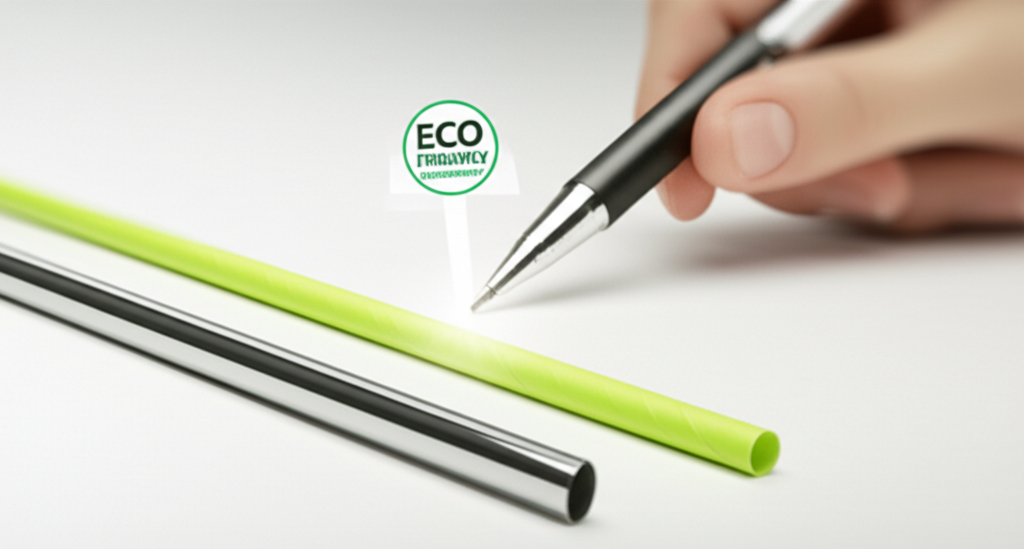
The Power of Reusable Straws and Waste Reduction
While single-use solutions continue to evolve, the most impactful path to sustainability lies in embracing circular economy principles and reducing overall consumption. Reusable straws, crafted from materials like stainless steel, glass, or bamboo, offer durable, multi-use alternatives that entirely eliminate the continuous production and disposal cycle of single-use items. Implementing reusable straw programs, however, requires careful consideration of cleaning infrastructure, logistics, and consumer behavior shifts.
Ultimately, the most sustainable straw is often no straw at all, emphasizing a fundamental shift away from single-use culture towards mindful consumption. For contexts where straws are truly necessary, businesses must explore alternatives like durablesugarcane straws vs. plasticto avoid functional disappointments. It is also critical to acknowledge that for many individuals with disabilities, plastic straws remain essential assistive devices for social inclusion, and thoughtful provision of suitable options is paramount.
Embrace certified compostable materials and reusable options for genuine sustainability, moving beyond superficial single-use solutions.
Future Trends & Innovation in Sustainable Straws
The landscape of sustainable straw solutions is continuously evolving, driven by material science advancements and stricter regulatory frameworks. Over the next 5-10 years, we can expect several key trends to shape procurement strategies:
- Advanced Bio-based Polymers:Beyond PHA, research and development in bio-based polymers will yield new materials that offer enhanced durability, wider biodegradability, and more sustainable production processes. These materials will increasingly mimic the performance characteristics of traditional plastics while maintaining verifiable environmental end-of-life pathways.
- Decentralized Composting Infrastructure:The expansion of industrial and even home composting facilities will become more widespread, enabling a truly circular economy for certified compostable materials. Regulatory bodies and industry associations, such as the EU industry association 360° Foodservice with its “Charter of Trust for Paper Drinking Straws” and accompanying “Trust Mark,” are actively working to establish clear standards and ensure compliance, helping businesses make informed choices and distinguishing genuinely sustainable products.
- Stricter PFAS Regulations:Global regulatory bodies are moving aggressively to restrict or ban PFAS in all consumer products, including food contact materials. This will necessitate a complete transition to PFAS-free coatings and materials across the supply chain, impacting paper and other plant-based product manufacturers.
- Focus on ‘No Straw’ or Reusable Defaults:Businesses will increasingly adopt “straw-on-request” policies or offer reusable options as the default, further reducing single-use consumption. Innovations in cleaning and sanitization for reusable programs will also become more sophisticated.
- Transparent LCA Reporting:As greenwashing scrutiny intensifies, companies will face mounting pressure to provide transparent, verifiable Life Cycle Assessment (LCA) data for their products. This will enable B2B buyers to compare environmental impacts holistically, moving beyond single-metric claims.
Future trends indicate a shift towards advanced bio-based polymers, expanded composting, stricter PFAS regulations, and transparent LCA reporting.
Competitive Advantage & Business Case for True Sustainability
In an increasingly environmentally conscious marketplace, genuine sustainability is not just a cost center or a compliance burden—it’s a potent driver of competitive advantage and long-term value.
By meticulously scrutinizing product claims and prioritizing truly sustainable alternatives, businesses can achieve quantifiable benefits:
- Cost Savings through Waste Reduction:While premium sustainable straws may have a higher unit cost, their superior durability reduces the need for multiple straws per serving, leading to less waste and potentially lower overall consumption. Furthermore, avoiding single-use plastic bans mitigates risks of fines and operational disruption.
- Risk Mitigation from Greenwashing and Compliance:Proactive adoption of certified, PFAS-free solutions drastically reduces the reputational risk associated with greenwashing scandals. This also ensures compliance with evolving regulations, preventing costly penalties and legal challenges. Maintaining a strong, verifiable sustainability profile safeguards your brand against public backlash and shareholder scrutiny.
- Enhanced Brand Value and Customer Loyalty:Demonstrating authentic commitment to environmental responsibility resonates deeply with modern consumers and B2B partners. This translates into increased brand affinity, customer loyalty, and a differentiated market position. Companies perceived as truly sustainable often command a premium, attracting new market segments and fostering stronger relationships.
- Market Share Opportunity:As environmental consciousness grows, businesses that lead with verifiable sustainability can capture market share from competitors who rely on superficial or misleading “green” claims. This positions your organization as an industry leader, attracting environmentally conscious clients and talent, and potentially unlocking new revenue streams through sustainable procurement partnerships.
Ultimately, the business case for genuine sustainable sourcing extends beyond immediate costs. It encompasses long-term risk mitigation, brand resilience, and the opportunity to secure a leading position in a market that increasingly values environmental integrity.
Genuine sustainability drives competitive advantage through cost savings, risk mitigation, enhanced brand value, and market share growth.
Conclusion: Navigating the Complexities of Sustainable Sourcing
The journey toward genuine sustainability in B2B operations requires moving beyond superficial fixes and symbolic gestures. While paper straws emerged as a seemingly simple solution to plastic pollution, rigorous life cycle assessments, chemical analyses revealing the pervasive presence of PFAS, and operational challenges expose a far more complex reality. Companies must meticulously scrutinize product claims, demand verifiable certifications, and prioritize systemic waste reduction strategies to ensure their environmental initiatives are truly impactful, not just performative.
Lead your organization towards verifiable environmental responsibility. Evaluate your current straw procurement using comprehensive LCA data, prioritize PFAS-free and industrially compostable certified options, and explore robust reusable solutions to ensure your sustainability initiatives are impactful, not just performative.
Frequently Asked Questions (FAQs)
Are paper straws truly sustainable for hospitality businesses?
While marketed as eco-friendly, many paper straws have hidden environmental costs due to energy-intensive production, water consumption, and the widespread presence of PFAS “forever chemicals.” Their poor durability also leads to increased waste and customer dissatisfaction in hospitality settings.
What are PFAS chemicals, and why are they a concern in paper straws for foodservice?
PFAS (per- and polyfluoroalkyl substances) are water-repellent “forever chemicals” used in paper straw coatings. They are highly persistent and linked to serious health issues, posing significant compliance and health risks for foodservice operations.
How can procurement managers avoid greenwashing when sourcing straws?
Procurement managers should demand verifiable certifications (e.g., FSC, ASTM D6400/EN13432 for compostability), ensure PFAS-free assurance, and scrutinize the entire supply chain and disposal infrastructure to avoid misleading “green” claims.
What are genuinely sustainable alternatives to conventional paper straws for hotels and cafes?
Consider certified industrially compostable solutions like PHA (polyhydroxyalkanoate) straws, which offer better durability and verified biodegradability. Reusable straws (stainless steel, bamboo) are also highly impactful for reducing waste.
How do paper straws impact customer experience in restaurants and bars?
Paper straws often become soggy and collapse quickly, leading to customer frustration and potentially negative brand perception. This can result in customers using multiple straws, inadvertently increasing waste.
Ready to Elevate Your Sustainability Strategy?
Take the next step towards verifiable environmental responsibility and secure your competitive advantage in the hospitality and foodservice industries.Contact Us for Sustainable Sourcing Solutions


